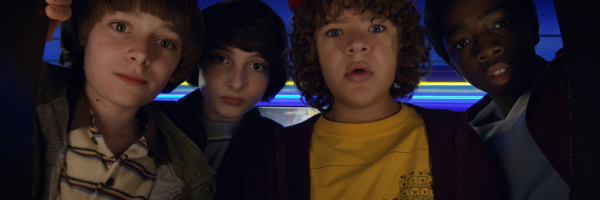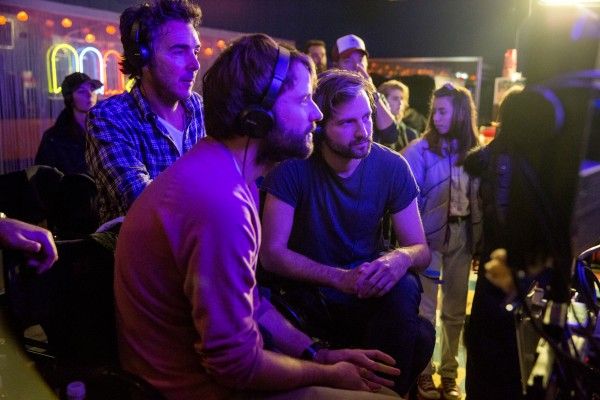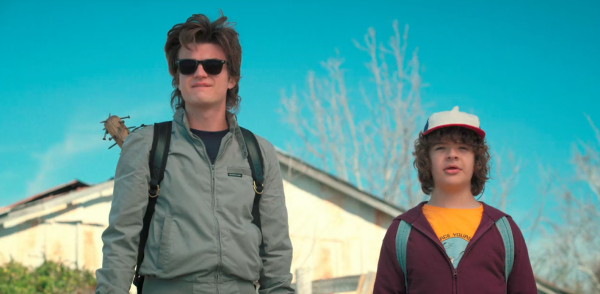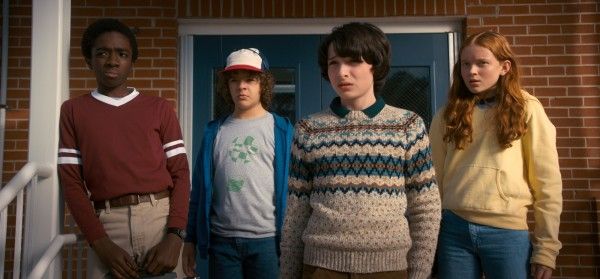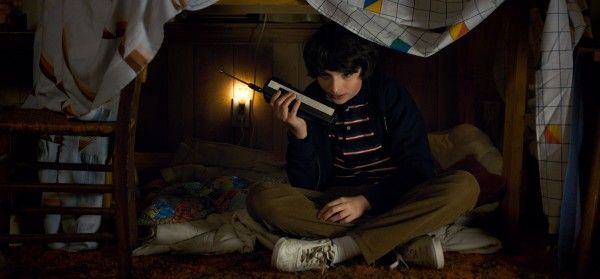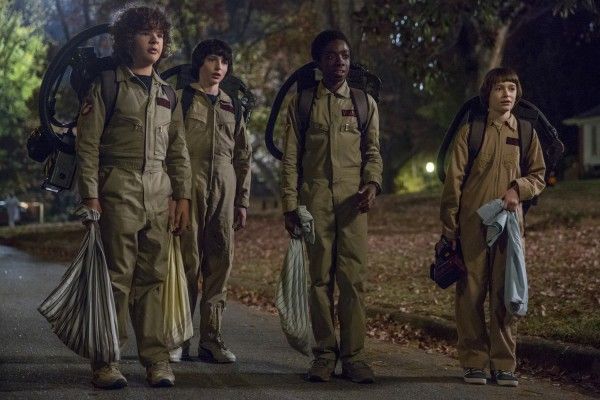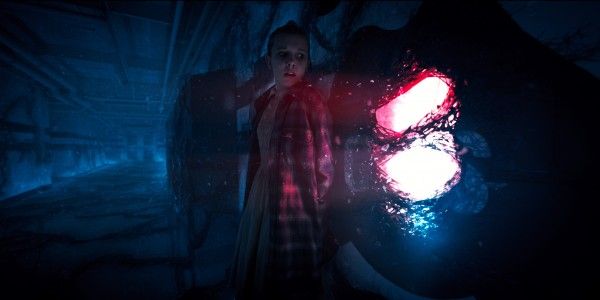When the first season of Stranger Things was released on Netflix, it became an overnight sensation. Many wondered how, exactly, this show not based on existing material and without an A-list cast had struck such a chord, but in addition to the delightful storytelling capabilities of creators/showrunners The Duffer Brothers and the charismatic cast, Stranger Things also looked unlike any other show available. The Duffers approached the season as one long movie, and in doing so culled together references from a variety of influential 80s films to create an aesthetic that evokes the classic Amblin films that many grew up watching.
Cinematographer Tim Ives was absolutely vital to making this visual a reality, and Stranger Things not only evokes the work of Steven Spielberg, but it also just looks incredibly cinematic in its own right. Stranger Things 2 upped the ante even more, bringing more dynamic colors and shades to the aesthetic as the canvas grew larger.
Recently I got the chance to speak with Ives over the phone about his work on Stranger Things, and the DP discussed how the show was first pitched to him, which films and filmmakers he drew from to create the aesthetic in Season 1, and how the visual approach shifted in Stranger Things 2. He also discussed working with director Andrew Stanton, crafting the Snow Ball set piece, the show’s use of light sources, and what he can tease about Stranger Things 3. Ives was also kind enough to briefly discuss his work with director Lee Toland Krieger on the upcoming Syfy series Deadly Class, produced by The Russo Brothers.
Check out the full interview below.
You've been with Stranger Things from the beginning, having shot the first two episodes. I was curious how the show was first pitched to you, and what those initial conversations were like with the Duffer Brothers about what the show would look like.
TIM IVES: Well, so first I got the outline in this little packet that they sent out. It was beautifully made, a little booklet on the films that they loved, and a lot of those references. We looked at reference films like E.T., Stand By Me, Close Encounters, and when we got together, we talked about them some more and I talked about certain lighting styles that say Allen Daviau did in E.T. for Steven Spielberg, that really contributed to that movie's feeling and ambience. And some of those techniques I think aren't really—if I lit something like that today on a modern show, it wouldn't really be appropriate, but we really wanted the show to feel like it was made back then. At least in the first season we really wanted that. So we looked at a bunch of references, and I did everything I could in my power to use the techniques and what was popular, in lighting, by some of my cinematic heroes back then.
I'm sure that was a pretty fun challenge for you then, to emulate some of these classic films.
IVES: It was a gift. It's a gift to be able to do that, especially from my early heroes. It was my first real movie-going decade, as well. I guess it's mostly Spielberg, including Indiana Jones as well, Temple of Doom and the first one, especially.
Season 2 feels a bit more colorful, a little more dynamic, and certainly darker. So what did you guys discuss in terms of making Stranger Things 2 visually distinct from the first season? Were there different films that you were looking at?
IVES: It did progress. We talked about filmmakers like James Cameron and John Carpenter and it was gonna be a pretty dark season for poor little Will. But we did want more color. The guys always said that they wanted the series to be fun. When I first read it I was like, "What's fun about a kid being kidnapped?" But the reality is, there was a great story there, obviously, and there's a little bit of safety in the way we did it, so that it's more geared toward families than it is towards people who just want to get the bejeezus scared out of them.
You shared DP duties with two other cinematographers this season. So I was curious, how does that collaboration process work in terms of ensuring that the aesthetic is consistent across the board?
IVES: So the first season, I was going to be shooting all of them, and the Duffers were gonna direct all of them as well. So when they got a little behind on writing, we had Shawn Levy come in and direct episodes three and four. And I needed to keep prepping for five and six, so I called Todd Campbell, who had just been doing the first season of Mr. Robot, which I did the pilot for. I met him in Austin at the premiere of Mr. Robot at South by Southwest, and I like Todd a lot. He was an up and coming, great cinematographer, and I felt like he did such a great job on Mr. Robot, taking what I did in the pilot and moving it forward, that it just seemed like it would be a good fit if he were available and he was, luckily for us. So he came in and filled in on Seasons 1 and 2, in that same slot, which opened up our ability for the Duffers and I to really prep and get some of the other episodes done.
We also had David Franco in Season 2. He did episode seven, which was sort of a bottle episode with Eleven. He was hired by the Duffers, and that episode was meant to be, as far as I believe they were concerned, a bottle episode, one that didn't really have to have the full aesthetic of Stranger Things. They were out of town in a different environment, and so there was that. But that's where we were at, for the first two seasons.
In Season 2, you got to shoot two episodes with Andrew Stanton, who I'm a big fan of. I was curious what it was like working with him as a director.
IVES: Andrew is the greatest guy in the world. He is also really devoted, selfless, and he was a pleasure to work with. I think for scheduling reasons it didn't work out that he came back this year, but ever since we started with him, we’ve remained very friendly. We both love literally the same music from a bunch of different decades. It's uncanny how similar our tastes are. I don't feel there's a week that's gone by since I filmed a year ago with him that we haven't texted some new song, or tried to get together for breakfast, or to do something. It was a great collaboration. The Duffers were super happy with what came for episodes five and six from last year, and just to work with somebody who has done such incredible work for Pixar was pretty mind-blowing for me.
You also shot I think the best set piece that the show has ever done, which is the Snow Ball. That was just the cherry on top of a really great season. What was it like shooting that and how did you go about planning out that aesthetic?
IVES: Really good question. There were big decisions to be made, and there were some thoughts of going very slick with it, and doing something really cool. And even though I haven't really embraced the Stand By Me aesthetic too much in the show, it felt like that was the one point where we needed to simplify it, and not hit it over the head with too slick a thing. So we designed it with Jess Royal and Chris Trujillo, to incorporate Christmas lights into the set. And really the idea was, in 1985, if you were in charge of throwing the Snow Ball, how would you decorate it? What would you do? What would you use? So, that was the mantra for it. We also looked at a bunch of John Hughes movies too, who continues to be an influence for us. But it was really fun, because I really wanted to simplify it. We actually rigged a huge disco ball in the ceiling, off camera, and had a bunch of lights built on a truss around it, that gave us the twinkly look all the way around it. And then I actually thought it would be fun, at one moment, to have snowflakes fall, as a magical moment, not thinking that maybe it might look a little bit like the flocking we use when we're in the Upside Down.
So we did one take, and we were getting ready to do some snow. And the one take was so amazing, and the kids were so amazing, that I ran over to the Duffers and we both shook our heads and were like, "We don't need any snow." It was very funny, because we were just trying to add something to it, and then at the last second we were like, the performances are so good, so rock solid. Gaten Matarazzo, as Dustin, your heart just falls for the kid. So he killed it, and so did Natalia, and all the kids did. It was so fun to shoot. It was hard, because we were up against the clock with all these kids, as we usually are, and that last shot we got of that, the big crane shot coming out, we see the Snow Ball Dance banner, we thought we weren't gonna make it. We had 45 seconds left and we moved that crane over to the back super fast, and we just said, "Go, go, go." The ADs were freaking out, and we were like, "Just do it, we gotta get the shot! It doesn't work, it doesn't work." And it wound up, that one take, working beautifully. It's the last take inside the Snow Ball before it goes outside. But I'm proud that we got that one.
It’s a great shot, and I just love that sequence so much. One of the things that you do so well with the show is playing with light sources, specifically the Christmas lights, and then you had the light above Will in the shed in Season 2. I was wondering if you could talk about integrating these actual light sources into the frame, in Stranger Things, and how big of a role they play into the visual aesthetic there.
IVES: Well I'm a big fan of lighting with practicals anyway. You walk into someone's home, or any interior place, there's always gonna be a light source, whether it's artificial or whether it's a big window light that comes in. You need to at least suggest that there is something lighting this house, that's either natural or artificial. I not only like to see lights in the shot, but I like them to actually have some use, and work in the set.
As far as the shed in Season 2 goes, it was an interrogation scene, and I also like pushing—when we used to shoot film, I liked pushing film to the extremes, and I don't mind doing it on the digital cinema as well. So those lights that you see, in the interrogation of Will, those are the same lights we used on reverses. I cleaned them up a little bit so it looked a little bit nicer on their skin, with some diffusion. But there was just a little bounce in the ceiling and that. I wanted it to be super hot, because he's supposed to be under the lights. And it actually served us very well, because what I did when we were looking back at Clay and Winona, and that light is hitting Will, and it's pointed right at the camera, Will is there, Noah Schnapp is the actor, he's actually got a little piece of white fabric on his shirt, off camera, that's bouncing back into Winona's face, to light her. So literally the light is bouncing off the actor, and I think he just kept his eyes closed or we may have given him sunglasses or something But I think a lot of the aesthetics that I tend to like tend to be simple. If I can do it with one light or so, I try to, or at least try to make it feel like it's not a lot of too complicated sources.
I think you just wrapped the first block of Stranger Things 3, and I know you can't say anything specific about it, but I was wondering if you could tease aesthetically what fans can expect, this season? I know the Duffers like to look at them as sequels, so I imagine things will change up a bit this year.
IVES: Yeah. They do change up, there's some new cast members that have been published as well, and we just finished up the first two episodes. I think the show is more fun and more thrilling than it's ever been, right off the bat. It's super, super fun, and funny, and scary at the same time, which is probably my favorite combination of things. So, I know the Duffers want to surprise the fans, and give them things that they didn't expect and such. But I can say the production design as well has been remarkable. So it's super exciting. We've had more fun than we've ever had in the last two months making the first block. And everybody that's been part of Stranger Things in the production process agree that it's gonna translate well to the episodes. So, we couldn't be having more fun, and working harder, and really having a blast with the season. It feels really fresh and fun.
Were there any specific films you guys talked about influencing Season 3?
IVES: We’re not gonna change our look so drastically that the show looks like a different show. I think that it just is evolving. I'm as proud as I've ever been of the show as far as my contributions to it, but no, I think we're still taking about that James Cameron thing, and that John Carpenter thing, and moving it forward. And really, we found our own thing now, and we always laughed at it when we reference ourselves, as just, "Oh, who do we think we are?" But we're having fun, and if it feels right, we do it.
Has filming during the spring and summer months changed the look and feel of it at all?
IVES: We have more green trees (laughs)
That's fair.
IVES: We have a lot more green trees, and the weather is less cooperative. But as far as the look of it goes, no. We're uncompromising with that, so we're not gonna be affected by anything, except what we want it to look like.
I also wanted to ask about Deadly Class, which I think sounds really exciting. What was it like to work with Lee Toland Krieger and the Russos on that one?
IVES: Well, it was fantastic. We shot up at Vancouver, in the late fall, early winter, and Lee brought something to this thing that is rarely seen in television, really a feature mentality, which I do get a lot with the Duffers as well. But Lee's eye is just a cinematographer's dream. He's uncompromising as well, and we reference some great films like Wong Kar-wai’s The Grandmaster.
That's exciting. That movie's gorgeous.
IVES: It is gorgeous, and that was our main go-to thing for that. So chocolatey, greens and yellows with an Eastern production design to it. It was another late teen, early 20s cast. I have high, high hopes for it. It was really, really fun. The Russos couldn't have been nicer, as producers to work for, and fully gave us support. It was a fun challenge. We shot a lot of grungy exteriors, really great locations in the rain and without the rain, and had a little bit of Blade Runner in there too. Blade Runner 2049 had just come out, and I went back and watched Blade Runner, so I know that I was influenced by both of those films a little bit. So, good influences to have. See if I could serve them as well as I possibly could, considering that the source material is made by masters.
Stranger Things is currently available on Netflix.

